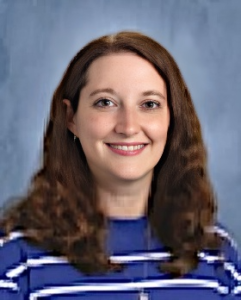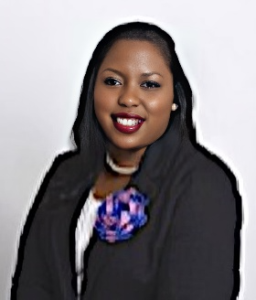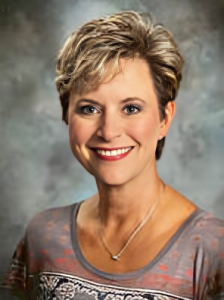This group article has been organized and introduced by secondary instructional partner Dr. Kristy Smith. Thanks to all the TCSS instructional partners/coaches who contributed!
The Tuscaloosa County (AL) School System was fortunate to send several secondary instructional partners and administrators to learn from the best at the ABPC-facilitated Instructional Partners Network retreats this school year in December and March.
We learned or refreshed our learning about Jim Knight’s Partnership Principles and were able to collaborate with coaching and instructional leadership colleagues from around our county and the state about their implementation of these principles.
 One important topic we discussed was how to get teachers to use video in their classrooms to strengthen their own instructional practices. One of the choices in Knight’s book The Impact Cycle for finding a “clear picture of reality” is the use of video evidence. In a recent informal video podcast chat, he discussed the use of video as “a power tool for learning.”
One important topic we discussed was how to get teachers to use video in their classrooms to strengthen their own instructional practices. One of the choices in Knight’s book The Impact Cycle for finding a “clear picture of reality” is the use of video evidence. In a recent informal video podcast chat, he discussed the use of video as “a power tool for learning.”
In our article you will learn about varying ways video is approached by five of the secondary instructional partners in the Tuscaloosa County School System: Dr. Kristy Smith, Danielle Fulghum, Sachiko Green, Rhonda Hollister, and Dr. Crystal Cuby-Richardson. I’ll begin with my own experience at Echols Middle School.
 Echols Middle School
Echols Middle School
Dr. Kristy Smith
Instructional Partner, NBCT
Most teachers are initially reluctant to video themselves. In my eight years as a Secondary Instructional Partner based at Echols Middle School, I have used video many times in coaching cycles after discussing how valuable the experience was for me while earning and renewing my National Board Certification. Being vulnerable as a coaching partner by sharing what it was like for me to watch myself teach made it safe for my teacher colleagues to try it as well.
So how do I get teachers to agree? When I first meet with teachers, I tell them what the Impact Cycle is and how it benefits them and their students. We discuss using observation or video to get a better grasp of their current class reality. There is no special lesson needed for this – just a regular lesson on a typical day. They also choose one class period to watch instead of the full day. That class can be the one that would show the most growth or a class that would be most receptive to new strategies.
When the teachers choose to video themselves, they choose a date and time that works for them. We then look over Knight’s tipsheet tools, How to Get the Most Out of Watching Your Video, Watch Your Students, and Watch Yourself together so they will have a focus for reflection as they watch their video later without me. I assure them this video is their property and is only for their growth and not attached to any evaluation whatsoever. We determine the technology needed and schedule another meeting time to debrief after they have watched their video and reflected using Knight’s tools.
On the selected day for video, I go to the class early and set up the preselected device (phones, tablets, and laptops all work well) for the teacher and remain in the back of the class to ensure the technology works throughout the lesson. I do not interact with the teacher or the students during the video. The teacher then sets aside time to watch and reflect before our next meeting.
The best part of this entire process is the debrief meeting. The teachers bring deep insights into their own practices and student engagement during their lessons. They see opportunities for teaching they would have missed without the video – that student in the back that raised her hand to answer who never speaks in class or the realization that the side conversation they corrected was actually on-topic and useful, but just sounded like chatter during a lecture.
Riding that wave of enthusiasm, I then ask open-ended questions from The Impact Cycle Workbook that lead teachers to setting their own PEERS goals: goals that are Powerful, Easy, Emotionally Compelling, Reachable, and Student-Focused and the coaching cycle continues.
 Sipsey Valley Middle School
Sipsey Valley Middle School
Danielle Fulghum, Education Specialist
Instructional Partner
The initial response from most teachers about recording themselves has usually been reluctance. So this year I decided to change my approach and start with the “why” of videotaping ourselves – how it can help us develop into master teachers. I explain to teachers that we are our own most severe critics. Therefore, we usually pick out things that others may not notice.
For the first videotaping, I give the teachers a checklist of things to look for from Jim Knight’s book, The Impact Cycle. We go over the checklist prior to recording, and I provide them with the technology to record themselves. There is usually a sigh of relief when I tell the teachers that I do not need to see the video and that we will meet in a few days to discuss the checklist.
The first teacher I met with after I began to follow this approach critiqued herself and already had a goal in mind when we followed up. I truly felt that the teacher saw the benefit of doing this activity. And the word gets around. After establishing a trusting relationship with the teachers, they aren’t as hesitant to videotape or even share it with me.
 Brookwood Middle School
Brookwood Middle School
Sachiko Green, Education Specialist
Instructional Partner
There are few people who love to see or hear themselves on video. I used to be one of the reluctant ones! Yet the outcomes of an educator observing themself and their students through video are really valuable. Video provides a unique perspective that leads to improved instructional strategies and better practices. Educators are offered the opportunity to view their classroom environment more objectively. This objectivity is an important message that is built into Jim Knight’s The Impact Cycle – it takes judgment out of the equation and allows the teacher to focus solely on how to best support students.
Video recording demands an elevated level of trust between the Instructional Partner/Coach and teachers. Teachers need to know that the videos we record are for their growth only. They are never evaluative, and I do not even watch them. The teachers are provided questions that facilitate reflection, and we discuss those to goal-set. The teachers lead all our post-video partnership meetings based on what they have viewed in the videos and what goals and strategies they want to implement to reach those goals.
Although video-based coaching may be intimidating to begin with, I believe the benefits far outweigh the initial discomfort. Due to video coaching, I have observed teachers enhance their instructional skills, utilize best practices in meaningful ways, and support student learning through reflective thinking.
 Tuscaloosa County High School
Tuscaloosa County High School
Rhonda Hollister
Instructional Partner
EDUCATIONAL CODE BLUE!!! As we enter a new era in the teacher education profession – facing ongoing teacher shortages – schools must find the best ways to educate novice, non-traditional teachers about strategic instruction while also constantly improving the art of teaching among even our most seasoned teachers. Like our students, we educators need a growth mindset, always looking for ways to improve our craft.
As coaches, we often video teachers during a coaching cycle as part of our process. However, we must also raise general awareness about routinely looking for ways to improve. After doing a lot of research on the topic, I presented the idea of every teacher in the building videoing themselves at least once a semester. While watching the video, they complete a questionnaire, Watch Your Students and Watch Yourself, from Jim Knight’s book, The Impact Cycle. After completing the questionnaire, they set up a time to meet with me and set goals for the school year.
I used this technique at Duncanville Middle School to set personal goals with each teacher. I have recently moved mid-year to Tuscaloosa County High School. Due to the timing of my move, we have all teachers videoing themselves presently, meeting with me in small groups, and setting goals for the upcoming school year.
One of my pet peeves has always been “blanket PD” because everyone is different and needs to work on what they identify as an area they want to improve. To assure teachers have choices we’re doing this: After watching their video, completing the personal reflection, and meeting with me, each teacher will choose one of five areas they want to work on next year.
At TCHS we have identified five areas of growth from which to choose: differentiated instruction, quality questioning, feedback, academic rigor, and cognitive engagement. After identifying their area of focus, each teacher will grade themselves according to a rubric that I will provide.
Next year, the teachers will divide into groups according to the area they chose and meet together during local professional development days, working as a team to improve. I am putting resources they can use into folders on Schoology for each of the five areas, but I encourage them to add to those folders as they find and share valuable information. Together, we can build folders with helpful information that we can use for years to come.
Each year, as professional development, teachers will be asked to choose a new area of focus to work on. Instead of designating one “problem of practice” for the whole school, we’ll invite each teacher to select the area they feel will benefit them most in their classroom. Then, during instructional rounds and walk-throughs, administrators will look for specifics related to the area a teacher has identified as their practice focus.
 Davis-Emerson Middle School
Davis-Emerson Middle School
Dr. Crystal Cuby-Richardson
Instructional Partner
Over the past few years, I have begun to be more intentional about helping teachers identify and own their instructional goals. Jim Knight suggests several methods for allowing teachers to see their current reality and the pros and cons of each in his book, The Impact Cycle. Without a doubt, video is the most impactful.
While most teachers are initially reluctant to video themselves, they usually come around. Through discussion, I admit that it is difficult for me to view myself as well but when I can watch and reflect it makes a real, positive difference in how I approach my instruction.
I encourage teachers and reinforce the message that this is purely for their growth and that no one else has to see the recording. Occasionally, teachers will ask if I have seen the video. I remind them I only watch if they want me to, and then I ask them if they’d like for me to watch. These steps reinforce trust in the relationship.
After teachers agree to the video, we work on the logistics for which class, how the device should be angled, and whether or not they would like me to stay in the room. Allowing teachers to have choice in the process not only helps them to become more at ease, but it also reinforces the fact that they are in charge of the process of their own growth and we are truly partners.
After determining how the videoing will work, I set up the recording device and stay or leave, dependent on the teacher’s choice. I have found that in some classes my presence can change the classroom/student dynamic, so we often discuss this prior to the video to determine the best option. Additionally, I share Knight’s documents about how to watch and reflect while reviewing the video.
After viewing the videos, the teachers are coming to our meetings full of ideas and questions about how to adjust their instructional practices. They are generally more eager to obtain help and want to know the next steps in the partnership cycle.
The teachers who embrace the use of video tend to be more reflective, open to change and eager to learn. While watching videos of our own instruction is intimidating at first, they can make a world of difference in helping us become the reflective practitioners we all strive to be.
Our Plans Going Forward
The Tuscaloosa County School System aims to continue using video to increase student achievement through teacher growth and increased teacher self-efficacy. For further information, please feel free to contact any of the contributors here at the email addresses listed below.
Dr. Kristy Smith < [email protected] >
Danielle Fulghum < [email protected] >
Sachiko Green < [email protected] >
Rhonda Hollister < [email protected] >
Dr. Crystal Cuby-Richardson < [email protected] >

0 Comments on "Tuscaloosa County: How Our Instructional Partners Encourage Teachers to Video Themselves"